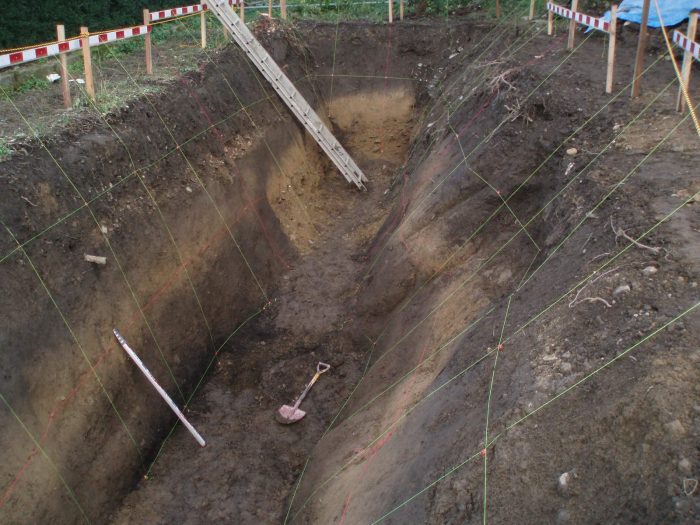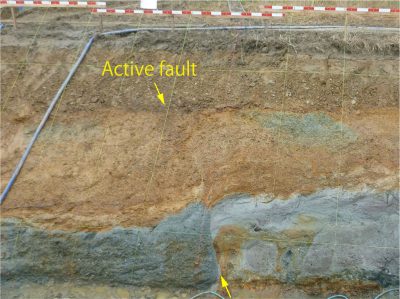If a large earthquake similar to the Great Hanshin Earthquake (1995) or the Great East Japan Earthquake (2011) occurs, various phenomena will be triggered, including topographic changes and tsunamis. Also, if an earthquake or tsunami occurred in the distant past, traces of this are buried deep in the earth’s stratum. We use our investigative technologies in collaborative work for shedding light on past earthquakes and tsunamis.
Active fault surveys
We conduct active fault surveys through trench excavation in different regions of Japan, mainly for the purpose of investigating the history of activity there. By observing the trench wall surfaces in detail and determining which strata has been deformed by the fault, we can uncover the history of fault activity through age samples (tephra, carbon-14 dating samples) encased between the strata.
Based on our extensive investigative survey experience, we are able to propose efficient and effective active fault surveys by recommending suitable trench survey locations and incorporating other investigative methods, such as boring and geophysical exploration.
Tsunami deposit surveys
In the Great East Japan Earthquake, many precious lives were lost due to the tsunami. The Japanese archipelago has been hit by many tsunamis in the past, and massive damage has occurred each time. Evidence of past tsunamis may remain in the soil as tsunami deposits. Focus has been placed on attempts to examine these tsunami deposits to determine how far inland past tsunamis have come, as a way to predict possible future tsunami damage.
CKC can respond to a variety of needs, from the planning and implementation of field surveys to age sample analysis (microfossil analysis, carbon-14 dating, tephra analysis, etc.).
.jpg)


